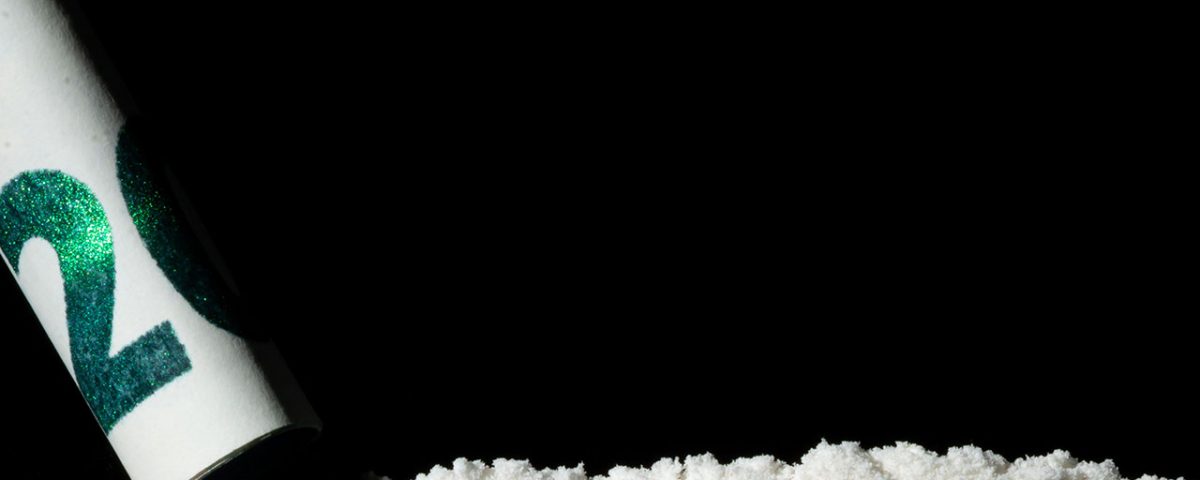Synthetic cathinones, more commonly referred to as bath salts, are man-made drugs designed to mimic the effects of both stimulants and hallucinogens. Individually, stimulants increase alertness and energy, while hallucinogens were named after their mind-altering effects on the brain.
Methylenedioxypyrovalerone (MDPV) and mephedrone are two commonly abused bath salts that have expanded past the club scene and have impacted people of all social groups. Today, we’re going to explore the differences between MDPV vs. mephedrone and their side effects.
What Is MDPV?
Methylenedioxypyrovalerone, or MDPV, is a synthetic cathinone that acts as a norepinephrine-dopamine reuptake inhibitor (NDRI), meaning that it activates the release of and prevents the reabsorption of chemicals dopamine and norepinephrine.
Dopamine plays a role in motor movement, motivation, pleasure, pain, reward, and perception of reality. Norepinephrine plays a role in the body’s stress response, regulating alertness and sleep, as well as physiological functions like blood pressure and heart rate. Both of these chemicals also affect our mood, and when elevated, can produce a euphoric sense of well-being and reward.
MDPV was first developed in the 1960s by a German pharmaceutical company called Boehringer Ingelheim. It’s structurally similar to cathinone, an alkaloid derived from the khat plant.
It remained an obscure stimulant until it broke through the scene in 2004 when it was sold as a designer drug. Today, along with other bath salts like Flakka and Angel Dust, MDPV is frequently abused for its mind-altering, euphoric side effects.
Common MDPV drug effects include:
- Extreme paranoia
- Anxiety and agitation
- Hallucinations
- Hypertension (high blood pressure)
- Increased energy and alertness
- Increased heart rate
- Suicidal tendencies
- Delusions
- Aggression and hostility
- Impaired judgment and reckless behavior
- Respiratory depression or failure
- Increased body temperature
- Dehydration
Long-term MDPV abuse can also lead to kidney and liver failure. Like most drugs of abuse, MDPV can also worsen any underlying problems with mental health. It’s advised that those who have developed a dependence on MDPV undergo a medically monitored detox to safely metabolize it from their system.
What Is Mephedrone?
Also known as M-CAT, White Magic, meow meow, and 4-methyl methcathinone, mephedrone is another synthetic cathinone that acts similarly to amphetamines, which are central nervous system stimulants. Like MDPV, mephedrone is also chemically similar to the cathinone found in the khat plant that’s native to eastern Africa.
Mephedrone was first synthesized in 1929 but did not become widely known until it reemerged somewhere around 1999 to 2000. At this point, the drug became illegal in many countries. However, mephedrone wasn’t permanently banned in the United States until July 2011, following the passage of the Synthetic Drug Abuse Prevention Act (SDAPA). Now, it’s classed among New Psychoactive Substances (NPS), a range of drugs that have been designed to produce similar side effects to those of illicit drugs like methamphetamine and cocaine.
Upon the emergency ban of mephedrone in 2011, it became a Schedule 1 controlled substance under federal law. This means that the drug does not have any accepted medical use in the U.S. and has a potential for abuse and addiction.
A mephedrone high can be compared to cocaine or meth high, during which the user experiences a rush of euphoria, energy, and even confidence. Research conducted on rats has shown that mephedrone works by activating serotonin and dopamine in the brain, activating pleasure and reward while affecting the person’s alertness.
Mephedrone is so similar to meth and other illicit stimulants that research on rats trained to distinguish between saline and meth or MDMA found the rats would self-administer mephedrone. The drug was shown to increase locomotor activity in rats, producing a high even in them.
Like other bath salts, mephedrone is mostly sold on the internet and at local retail shops where it’s promoted as “plant food” or “jewelry cleaner.” Drug Enforcement Agency (DEA) records show that law enforcement has encountered mephedrone in at least 37 states since 2009.
Mephedrone is popular among young adults, mid-to-late adolescents, and older adults. Despite names like “White Magic,” mephedrone’s side effects are anything but magical.
Common White Magic drug effects include:
- Euphoria
- Dizziness
- Irritability
- Agitation
- Anxiety
- Chest pain
- Increased blood pressure
- Dilated pupils
- Nausea and/or vomiting
- Increased heart rate
- Seizures
- Nose bleeding
As with the MDPV drug, meow meow drug effects are potent enough to produce a euphoric high that produces pleasure and activates a rewarding sensation, contributing to continued drug use. Those who become addicted to this drug are often at risk of moving onto harder drugs, like cocaine and methamphetamine, which are known to be even deadlier.
MDPV vs. Mephedrone: What’s the Difference?
So now that we know everything there is to know about mephedrone and MDPV bath salts, how are they different? The main difference between MDPV and mephedrone is that mephedrone acts like methamphetamines to increase dopamine concentrations, while MDPV mimics how cocaine releases and inhibits the reuptake of dopamine.
Basically, their mechanisms of action are different. MDPV is 10 times more potent than cocaine because when it binds to dopamine transporters, it doesn’t release them, unlike cocaine. As a result, the imbalance among neurotransmitters remains, elongating the high and making it more difficult for users to recover.
Bath salts are sold under false labels in local stores, leading many to believe that they’re safer alternatives to other substances. However, these drugs are unregulated, man-made substances that often contain various random and harmful chemicals to produce certain side effects.
Users often have no idea what they’re using when they take these drugs. Additionally, their side effects are eerily similar to illicit drugs like meth and cocaine, increasing users' likelihood of turning to these drugs when they want a more intense high.
Drug Addiction Treatment
Long-term MDPV and mephedrone use can lead to addiction, mental illness, and various physical ailments. If you’ve become addicted to mephedrone, MDPV, or other drugs or alcohol, we can help.
Banyan Treatment Centers Boca offers various levels of care to aid in patients’ recovery from drug addiction and mental illness. Oftentimes, the two conditions are related and can even co-occur.
If you’re struggling with drug or alcohol abuse or a mental health disorder, call our rehab in Boca Raton today at 888-280-4763 for more information about our inpatient mental health treatment and rehab programs.
Related Reading:
History of Bath Salts Are Flakka and Bath Salts the Same Thing?









